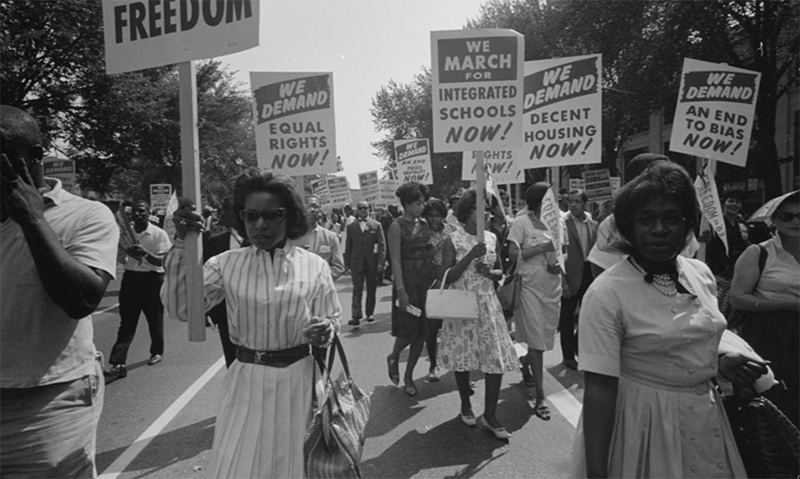Teach This Poem, though developed with a classroom in mind, can be easily adapted for remote-learning, hybrid-learning models, or in-person classes. Please see our suggestions for how to adapt this lesson for remote or blended learning. We have also noted suggestions when applicable and will continue to add to these suggestions online.
Look at these images from the 1963 March on Washington for Jobs and Freedom here.
The following activities and questions are designed to help your students use their noticing skills to move through the poem and develop their thinking about its meaning with confidence, using what they’ve noticed as evidence for their interpretations. Read more about the framework upon which these activities are based.
-
Warm-up: (free-write/draw) Free-write or draw about the following questions: What is voice? What is the power of a voice?
-
Before Reading the Poem: Look at these images from the 1963 March on Washington for Jobs and Freedom. (Teachers, you may wish to show all of the images in a gallery walk.) What do you notice in these images? What similarities do you see? What do they make you think?
-
Reading the Poem: Now, silently read the poem “This Is Not a Small Voice” by Sonia Sanchez. What do you notice about the poem? Annotate any words or phrases that stand out to you and note any questions you might have.
-
Listening to the Poem: (enlist two volunteers to read the poem aloud) Listen as the poem is read aloud twice, and write down any additional words and phrases that stand out to you. Or, you can opt to listen to watch a video of a student reciting the poem.
-
Small-group Discussion: Share what you noticed in the poem with a small group of students. Based on the details you just shared with your small group and the resources from the beginning of class, what is the power of a voice? How does this compare to the images from the 1963 March and your own images/pieces of writing?
-
Whole-class Discussion: (Teachers, if you haven’t already, this might be a good time to introduce anaphora to your students. You can find information about anaphora here.) How does the poet use repetition in the poem? What does the poem say about justice? What do you think of the lines, “This is a love initiated by Black Genius. / This is not a small voice / you hear/?”
-
Extension for Grades 7-8: Create your own poem inspired by Sanchez’s work. What is it that you want to say? (Teachers, your students might enjoy creating their work using this interactive site from Kent State University.)
- Extension for Grades 9-12: Read more about Sonia Sanchez. Then, watch this Ted Talk by Sanchez. Write a response to the question in the video, “What does it mean to be human?” Your response may be a poem, a prose piece, or something more creative like a collage or other piece of artwork. (Teachers, your students might enjoy this writing prompt, composed by the poet Yona Harvey.)
“The artists within the Black Arts Movement sought to create politically engaged work that explored the African American cultural and historical experience and transformed the way African Americans were portrayed in literature and the arts.” Read more about the Black Arts Movement.

